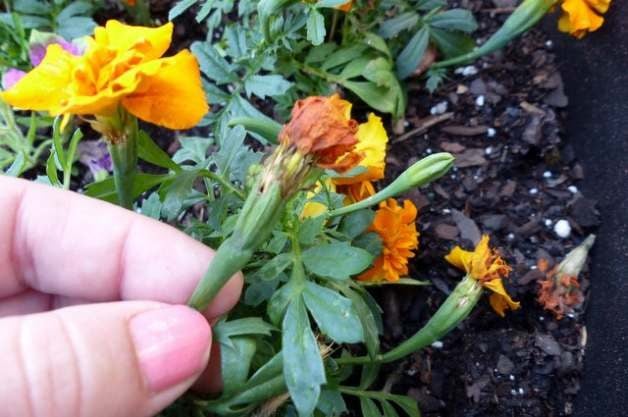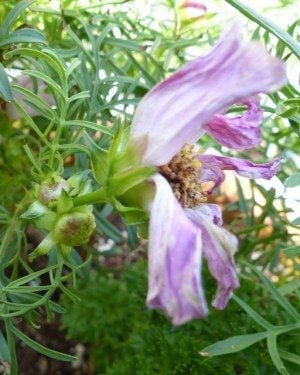Keep Your Garden Blooming by Deadheading Flowers
Updated: Oct. 19, 2021
One simple chore will help your garden bloom better and longer. Deadheading flowers encourages plants to produce blooms instead of seeds.
Our editors and experts handpick every product we feature. We may earn a commission from your purchases.
I’m a down-and-dirty kind of gardener. When I see women in garden magazines or movies wearing wide-brimmed garden hats with bows, a neat apron around their waists and pristine gardening gloves, I always think, “Oh, come on! That’s not real gardening!” In my world, gardening involves dirty fingernails and dirty knees, grass stains and muddy cuffs, and an old hat faded by sweat and streaked with soil. But there is one gardening chore that doesn’t have to involve sweat in the eyes and an aching back. Deadheading flowers is a task you can usually do without getting dirty. You can squeeze it in even if you only have a few minutes to spare. In fact, one of my favorite times to deadhead is when I’m on the phone with my mom. It’s easy, it’s fast, and—most importantly—it really makes a difference.
Deadheading Flowers: Why It Matters

When I asked other gardeners why they think deadheading is important, they listed three main reasons:
Flowers bloom better and longer. When a flower fades and petals drop off, plants know the time has come to produce seeds. This is the main goal of a plant—to reproduce. The flowers are just the beautiful lure they use to draw in pollinators. So once the flower is done, plants throw all their energy into turning that flower head into a seed head. This is especially true of annuals that only bloom once a season. Deadheading allows gardeners to “fool” the plant into flowering again, since they have no seed heads to grow.
Flower gardens look tidier. Dead flower heads are often just plain unattractive. Removing them makes your garden look neater immediately, even if a few weeds are still lurking nearby.
Deadheading flowers keeps aggressive plants in check. Plants are usually determined to spread their seed far and wide. Sometimes that’s not especially welcome in more cultivated flower gardens. By trimming flower heads before they have a chance to produce seeds, you can keep more aggressive plants from re-seeding and taking over.
Deadheading your flowers helps you monitor for problems. Here in Florida, summer is not the time to spend hours in the garden. The hot sun and humid temperatures wilt even the strongest gardeners in just a few minutes. Sometimes a week or two will go by and I realize I really haven’t looked closely at my gardens at all. So, once the sun has set, I’ll walk around for a few minutes in the (relative) cool of the evening, snipping deadheads and checking my plants for any signs of disease or pests. I also look for new blooms and growth I otherwise might have missed the chance to enjoy.
Flower Deadheading Tips

Deadheading flowers is pretty easy, but here are a few things to remember to make it worth your time.
- Remove the whole flower head, not just the dead petals. Remember, once the petals are gone, the plant will start putting energy into turning that flower head into a seed head. Snip off the whole thing to stop that process. (Look closely though. Some plants will start another bud directly next to the first one on the stem. Be sure you’re not removing new buds as well as dead flowers.)
- Carry a small pair of scissors. Some flowers are very easy to snap off by hand, like marigolds, but others have tougher stems. A pair of small sharp scissors will make a clean cut, reducing the area for disease to get into your plant.
- Tuck a bag in your pocket. If you’re focused on keeping your garden tidy, or want to make sure you are keeping aggressive plants under control, throw the deadheads into a small bag to dispose of later. If you’re not worried about that, though, you can just drop the deadheads on the ground around the plant.
When you’re ready for your plants to produce seeds, be sure to leave a few deadheads on your plants so the process can get going. If you feel the need to tidy up, you can pull off the dead petals, but leave the flower heads there to become seed heads.
